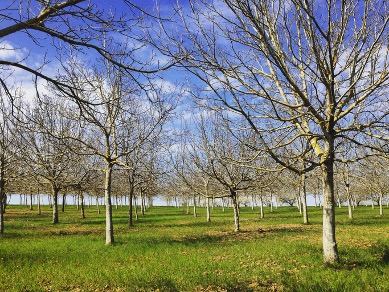As of this writing, winter is about halfway over. The walnut orchards are dormant, placed into a deep sleep by the cold winter temperatures. One of the things growers closely monitor this time of year is “chilling hours”. A chilling hour represents each hour the tree is subjected to temperatures below 45 degrees F. Fruit trees vary in the number of chilling hours they require during the winter. For walnut trees, the ideal range is between 800-1,000 hours.
Not only is the number of chilling hours critical, but what’s also important is the way the trees are placed into dormancy. An early frost that occurs in late November (a few weeks after the completion of the harvest) or early December can be extremely damaging, as it “shocks” the tree and can freeze the inner bark (called the “phloem”) or even the delicate layer beneath called the cambium. If this happens, the entire tree branch will die.
We’ve also learned that certain varieties of walnut trees are more susceptible to this early frost than others.
Fortunately, we believe we had a nice entry into the dormant period last late autumn and that we’ve received adequate chilling hours to give the trees a nice sleep. In our next entry, we’ll discuss the ideal conditions to bring the orchards out of their winter sleep in order to bring on vigorous growth in the spring.

